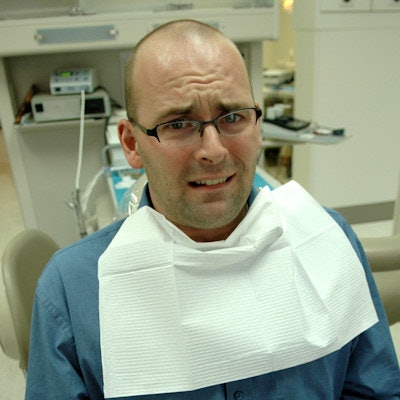
When a U.S. state expands Medicaid eligibility to include dental benefits, does this actually increase the number of low-income adults who see a dentist in that state? What does this expanded eligibility mean for low-income parents of children in these states? These questions were the focus of a new study published in the April issue of Health Affairs.
 Lead author Astha Singhal, BDS, MPH, PhD.
Lead author Astha Singhal, BDS, MPH, PhD.Low-income, childless adults in states that provided dental benefits were almost 10% more likely have seen a dentist in the past year, compared with low-income adults in states without such benefits, according to the study (Health Affairs, April 2017, Vol. 36:4, pp. 723-732). However, the same could not be said about low-income adults with children, as they were significantly less likely to have seen a dentist, the study authors reported.
"Low-income adults face significant barriers to accessing dental care. Even in states where Medicaid provides dental benefits for adults, access to dental care is limited by very few dentists who are willing to accept Medicaid patients," lead author Astha Singhal, BDS, MPH, PhD, told DrBicuspid.com in an interview.
Dr. Singhal is an assistant professor of health policy and health services research at the Henry M. Goldman School of Dental Medicine at Boston University.
Expanded dental benefits
While dental coverage for adult enrollees is an optional benefit under Medicaid, 31 U.S. states and the District of Columbia have expanded eligibility for Medicaid under the Patient Protection and Affordable Care Act (ACA). This expansion means that millions of low-income adults have gained healthcare coverage and also oral healthcare coverage in those states that offer dental benefits.
Researchers wanted to find out if this expansion of benefits meant more visits to a dentist's office. They used data for the two years of 2010 and 2014 from the Behavioral Risk Factor Surveillance System (BRFSS) to measure the impact that the expansion of eligibility had on these adults' use of dental care.
The researchers focused on low-income, nonelderly adults between the ages of 21 and 64 who had an annual household income of less than $15,000. They used any self-reported dental visit in the past 12 months as an indicator of access to dental care. They compared the number of visits of those adults who lived in a state that expanded Medicaid under the ACA in 2014 or earlier with those who lived in a state that had not expanded Medicaid. They also compared those who lived in a state that provided more-than-emergency dental coverage for adults enrolled in Medicaid versus those who lived in a state that did not.
Among states that provided dental benefits and expanded their Medicaid program, the study authors reported a statistically significant increase (1.8%) in the likelihood that childless adults had a dental visit compared to the same population before benefits were expanded.
When the researchers compared residents of states that expanded eligibility with residents of those states that did not, they identified a 9.7% (p < 0.0001) greater probability that low-income residents of states with expanded dental benefits had a dental visit in the past year.
"It is evident that low-income residents of states that provided adult dental benefits, regardless of expansion status, had greater use of dental care, compared to residents of states that did not provide such benefits," the authors wrote.
However, they reported that the news was not as positive when the researchers expanded the scope of their study, noting that low-income parents of children had a statistically significant decline in dental visits of more than 8%.
The different results seen in the two adult populations may indicate so-called supply-side constraints, according to the authors. By this they mean that there were not enough dental providers to meet the needs of adults with children plus the needs of this newly enrolled population of low-income, childless adults.
"Although the data on dentists' participation are dated, several factors that affect their participation indicate that the situation has likely not improved," the authors concluded.
Dr. Singhal noted that, while supply-side constraints were likely a factor, she cautioned that she and her co-authors did not specifically study provider capacity and availability.
"While we speculate that our results are likely due to supply-side constraints, we did not specifically examine the provider capacity or availability," Dr. Singhal stated. "There are several factors that affect dentist availability, including reimbursement rates, geographic distribution, administrative ease of processing claims, and more."
The study authors suggested potential solutions to this lack of providers.
"It may be necessary both to provide more investments to expand the capacity of the existing safety net and to examine alternative models of dental care delivery," they wrote.
Not sufficient by itself
The authors reported a number of potential limitations of the study, including the following:
- It is possible the results over- or underreported outcomes.
- As cellphone users were added to the BRFSS data in 2011, the data from 2010 and 2014 may be noncomparable. The researchers took multiple steps to ensure that their estimates were valid and found that estimates and significance levels did not change.
- As a few states (California, Connecticut, the District of Columbia, and Minnesota) expanded their Medicaid programs before 2014, this might have caused an underestimation of the expansion effect. However, the authors reported that these states were building on or replacing existing state-funded programs, leading them to conclude that these early expansions did not lead to a considerable change in access to dental care.
- The authors noted that it was possible that some enrollees in nonexpansion states might have received limited dental benefits through managed care organizations contracted by a state had opted to offer those benefits.
- This study also only examined only the early impact of Medicaid expansion, which was begun in most states in January 2014.
- The authors also could not account for differences in state policies on coverage and access.
This study examined only the very early impact of expansion, as most states started implementing it in early 2014, Dr. Singhal noted.
"We will continue to examine the sustained impact of expansion (and any changes to expansion) with more recent data as it becomes available," she added.
Dr. Singhal concluded by acknowledging that more needs to improve than just access to dental care.
"We need an expansion in dental providers' participation with Medicaid and an increase in the dental safety net capacity for coverage to be effective," she noted.



















